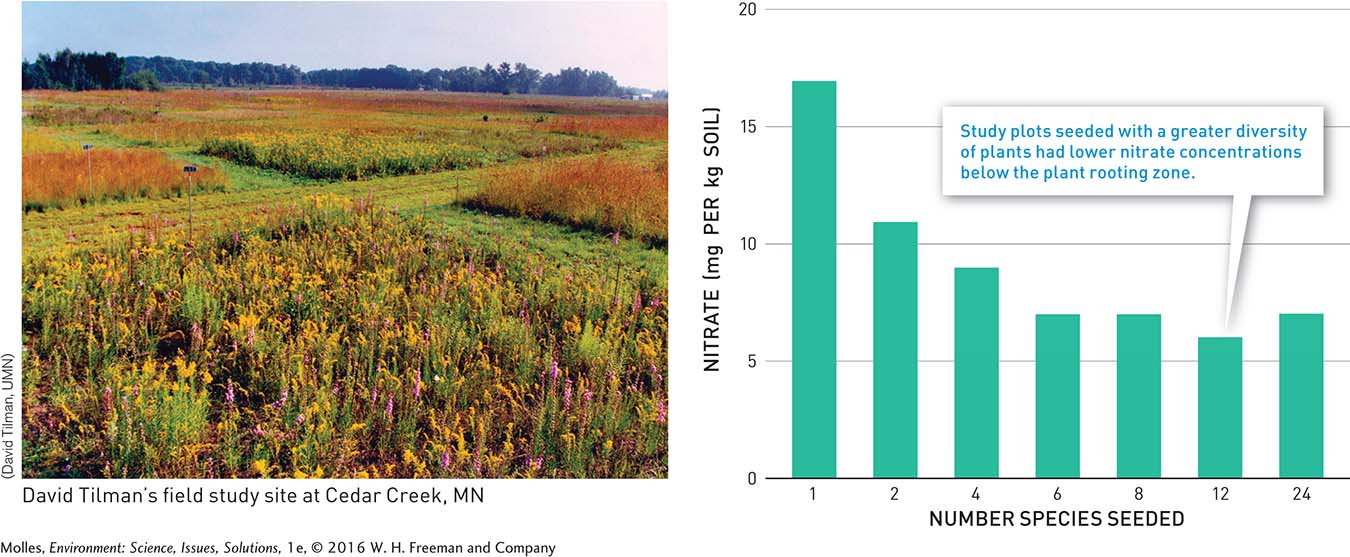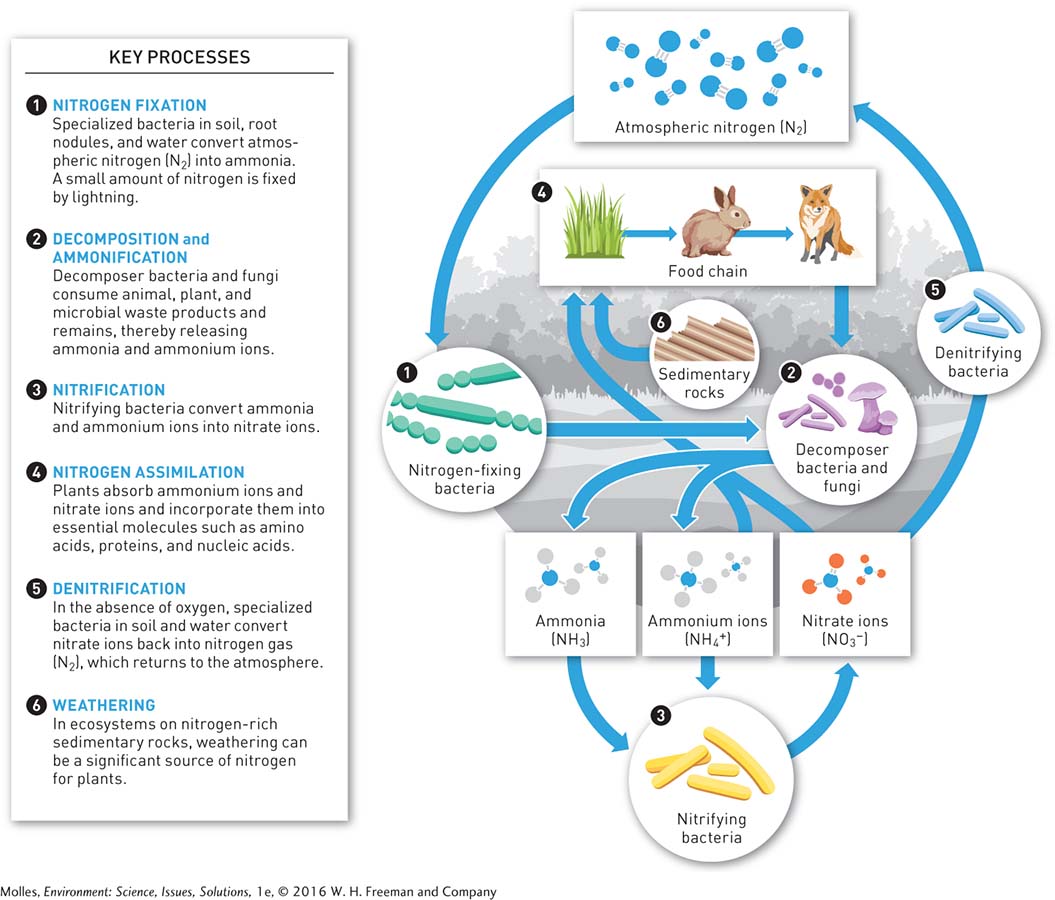7.1–7.3 Science

Using photosynthesis, plants turn energy from the Sun, carbon dioxide from the atmosphere, and moisture and nutrients from the soil into leafy, green biomass. The amount of biomass produced—
7.1 Climate, biodiversity, and nutrients influence terrestrial primary production
The Amazonian rain forest has a very different climate than arctic tundra. The rain forest is moist and warm, with lush growth of countless varieties of plants; the tundra is dry and cold, with sparse growth of far fewer plant species. Clearly, the climate of an area, especially its prevailing temperature and precipitation, affects the biomass and the type of vegetation that grows there. Climate is also one of the main factors influencing variation in primary production (Figure 7.1). As any gardener knows, most plants grow best when they have plenty of water and sunlight, so long as temperatures are not so hot that the plants wilt or so frigid that they freeze.

Species-Richness Effects
Natural ecosystems add layers of complexity atop these environmental variables. More specifically, they contain a variety of plant species that interact with one another, and scientists have long suspected that a link exists between the number of species and the productivity of an ecosystem—
To test this hypothesis, in the early 1990s, an ecologist named David Tilman prepared 147 plots—
Plant growth patterns and physiology suggest causal mechanisms for these findings. Some root systems plunge deep into the soil, whereas others crawl along just under the surface, which means that each plant takes up nutrients and moisture from different parts of the soil column. Also, some plant species make the environment more favorable for other species by, for example, adding nitrogen to the soil or providing shade for species that prefer the community understory. These positive effects can facilitate greater productivity where multiple species grow together.
Soil Nutrients
Although climate and plant diversity have substantial effects on levels of terrestrial primary production, gardeners also know that the amount of fruits and vegetables they harvest is affected by soil fertility. Soil fertility is especially connected to levels of certain key elements, such as the availability of nitrogen, the soil nutrient that most commonly limits terrestrial primary production. Consequently, retaining nutrients in soil is critical for sustaining primary production. During one of the field experiments conducted by Tilman and his colleagues, they learned that study plots with more plant species were better able to take up and retain nitrate, a chemical form of nitrogen useful to plants but subject to leaching through the soil by water. More plant species on a single plot retained more nitrogen, and therefore overall primary production was higher (Figure 7.2).

The Nitrogen Cycle
nitrogen cycle The process whereby nitrogen passes through and between ecosystems, involving several key actions by microorganisms, including nitrogen fixation, decomposition, ammonification, nitrification, and denitrification.
Nitrogen, like other essential nutrients on Earth, cycles from soil to water to air. The chief reservoir of nitrogen, an essential component of protein and nucleic acids and thus critical for life, is the atmosphere, where elemental nitrogen, N2, makes up 78% of atmospheric gases. However, most organisms cannot use elemental nitrogen to make essential nitrogen-
nitrogen fixation Incorporation of atmospheric nitrogen, N2, into nitrogen-
Six major processes drive the nitrogen cycle (Figure 7.3). Elemental nitrogen from the atmosphere enters the cycle through the process of nitrogen fixation, during which specialized nitrogen-

ammonification The process by which decomposers break down proteins and amino acids, releasing nitrogen in the form of ammonia (NH3) or ammonium ion (NH4+).
nitrification The conversion of ammonia or ammonium to nitrites (NO3−) by nitrifying bacteria.
Ammonia and ammonium ions are released from decomposing plant, animal, and microbial biomass in a process called (2) ammonification. Some ammonium and ammonia are converted to nitrates through (3) nitrification, a two-
nitrogen assimilation The incorporation by plants of nitrate and ammonium into essential nitrogen-
Once within the plant or alga, nitrate and ammonium enter a process called (4) nitrogen assimilation, in which they are incorporated into essential nitrogen-
denitrification The process by which specialized bacteria in soil and water convert nitrate ions back into nitrogen gas (N2), which returns to the atmosphere.
weathering The fragmentation and decomposition of mineral materials as a result of chemical, biological, and mechanical processes, resulting in the release of nitrogen, phosphorus, and other elements.
Nitrogen can also be lost from ecosystems through the process of (5) denitrification. Denitrification takes place in poorly drained, poorly aerated soils, or in low-
Think About It
If you were to travel northward from the deserts of the American Southwest, North Africa, or Central Asia, primary production would first increase and then decline as you continued north. Why?
Can you envision a scenario where two species growing together might decrease primary production? How does that fit into what we know from David Tilman’s experiments?
How might different leaf shapes among plant species cause diverse ecosystems to maximize primary production?
How would life on Earth change if all nitrogen-
fixing organisms suddenly became extinct?